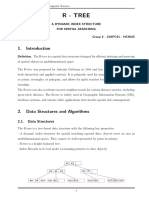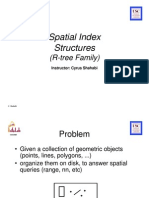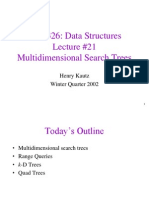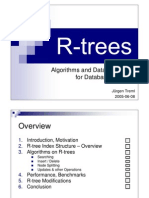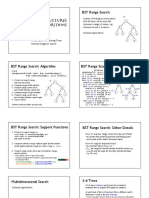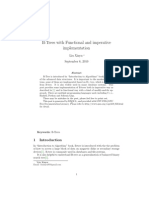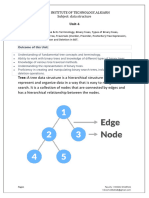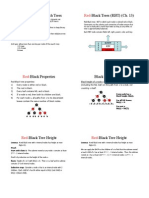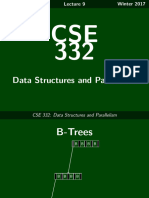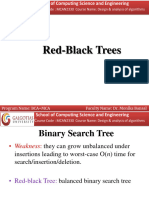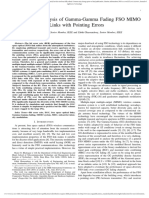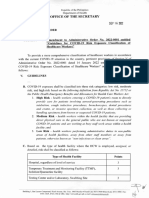0% found this document useful (0 votes)
87 views33 pagesRtree
The document discusses the R-tree, which is a multi-dimensional index structure that extends the B-tree. The R-tree supports efficient orthogonal range queries by storing minimum bounding rectangles (MBRs) that encompass groups of data points. It discusses how the R-tree is structured, how queries are performed by recursively checking if node MBRs intersect the search region, and how data is inserted by choosing subtrees to minimize the perimeter of bounding rectangles.
Uploaded by
milagrosCopyright
© © All Rights Reserved
We take content rights seriously. If you suspect this is your content, claim it here.
Available Formats
Download as PDF, TXT or read online on Scribd
0% found this document useful (0 votes)
87 views33 pagesRtree
The document discusses the R-tree, which is a multi-dimensional index structure that extends the B-tree. The R-tree supports efficient orthogonal range queries by storing minimum bounding rectangles (MBRs) that encompass groups of data points. It discusses how the R-tree is structured, how queries are performed by recursively checking if node MBRs intersect the search region, and how data is inserted by choosing subtrees to minimize the perimeter of bounding rectangles.
Uploaded by
milagrosCopyright
© © All Rights Reserved
We take content rights seriously. If you suspect this is your content, claim it here.
Available Formats
Download as PDF, TXT or read online on Scribd
/ 33

